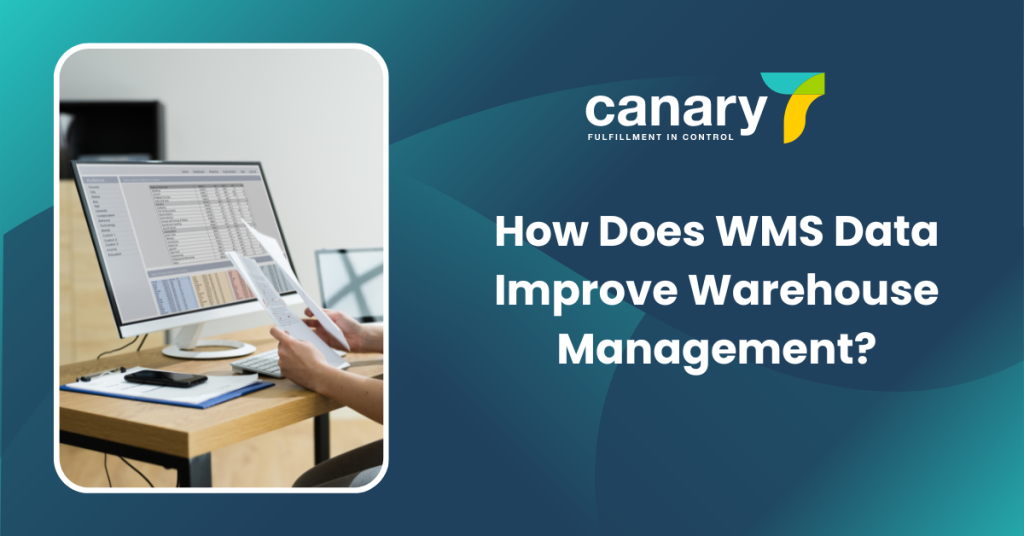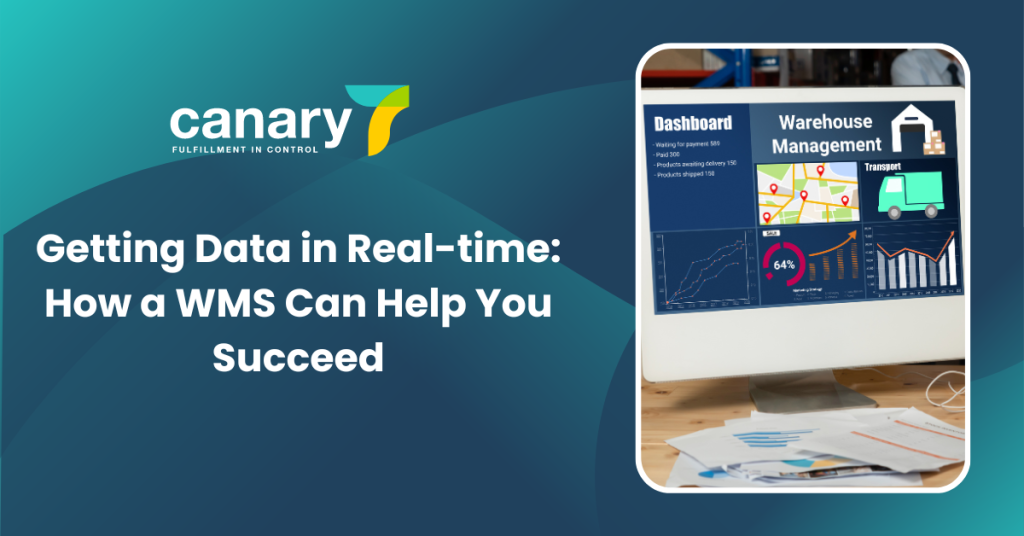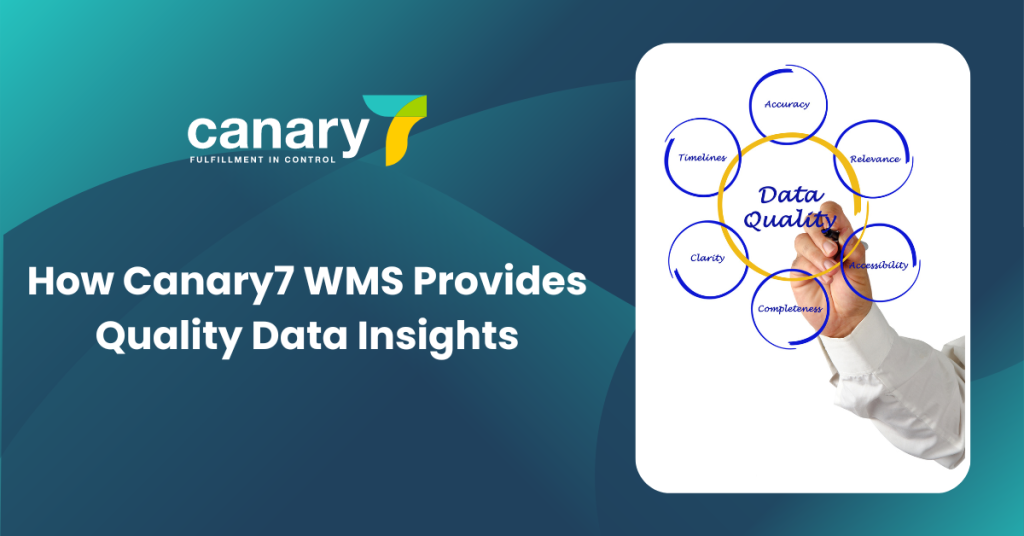In the fast-paced world of supply chain management, having accurate data is crucial. A dynamic warehouse is an integral part of this supply chain because it is the bridge between suppliers and customers. With razor-sharp data analytics, warehouses can monitor stock movement to ensure efficient delivery.
Data insights are also necessary to improve any gaps in the warehouse workflow. All these tasks can be done with the help of warehouse management software. Read on to learn more about how powerful wms analytics are in warehouse decision-making.
How Does WMS Data Improve Warehouse Management?

Some warehouses might prefer the tried-and-tested manual inventory system, but if they want to keep up with digitisation trends, they need a warehouse management system (WMS).
Transitioning from a fully manual to a completely digital inventory system might seem daunting, but the benefits are tenfold, and the errors are minimal.
A WMS system is designed to manage all major functions in a warehouse. You can add all your stored inventory here, assign categories, track its movement, and ensure it is shipped on time.
A WMS system also helps you manage workload and assign tasks according to a worker’s skills. Ultimately, your WMS should centralise all functions in the warehouse. Once you get started with this software, you’ll have a future-proof solution to increase your warehouse’s longevity.
Getting Data in Real-time: How a WMS Can Help You Succeed

Real-time inventory management instantly records inventory purchases and sales through the software. This feature allows your business to understand and track stock movement in real-time.
Since this data is gathered in real-time, whichever software you use will have several components that record and track stock information.
These components, often called automated data collectors, gather data such as stock levels, order history, and customer preferences. This data is necessary for stopping bottlenecks and decreasing lead times.
Some common ways to gather data include:
- RIFD Tags: Modern-day inventory often uses RIFD tags to capture data and send it through radio waves. All the data captured with RIFD tags is accurate, making it an excellent feature for real-time inventory tracking.
- Barcodes: Barcodes are another great way to tag and organise your inventory. Each item in your stock is given a unique barcode, so there’s no chance of mix-up. With this feature, you can check your stock movement with razor-sharp accuracy.
- IoT Devices and Sensors: These sensors collect real-time data and find crucial information for keeping perishable items in good condition.
6 Ways Data and Analytics Can Transform Warehouse Management
Optimisation is the name of the game when it comes to warehouse management systems. These handy tools can transform your warehouse and create a resilient supply chain.
Data and analytics are crucial here because they provide blueprints for improving your warehouse functions. Let’s look at 6 ways data analytics can transform your warehouse.
1. Accurate Inventory Tracking
Stock levels are crucial if you want your warehouse to function smoothly. With accurate data and analytics, you can make key decisions regarding your stock and track its movement throughout the warehouse.
When you analyse data on stock levels, you can identify what products are in high demand and which are moving slowly. This will allow you to make adjustments without upsetting the flow of your supply chain.
Since demand fluctuates, WMS analytics will give you historical data so you can chart trends and ensure you stay ahead of the curve. You can also examine warehouse pain points and create techniques to manage stock. With these tools, you can reduce waste and improve the overall accuracy of your supply chain.
2. Integrate Multi-Channel Data
A warehouse is comprised of multiple parts that gather essential data to help you organise your supply chain. However, it is challenging to keep track of all this information and apply it efficiently.
A WMS is crucial here because it centralises all the data in your warehouse, allowing you to gather insights from multiple channels and handle them with one software.
This process involves collecting data from various sources, such as order management, logistics, and labour management, and consolidating it into a single, unified view. Having integrated analytics gives you better visibility over your warehouse and helps you make more informed decisions.
3. Optimise Warehouse Layout

WMS analytics are great for creating an optimised layout for your warehouse.
Your WMS software will analyse the available space to tell you the best techniques for keeping stock and minimising waste. These techniques can help you create designated spots for product categories and accessible pathways for picking.
Ultimately, you’ll have quicker placement and retrieval, making a smooth workflow environment. All these features will help you reduce operating expenses so you can allocate funds where they matter.
Canary7’s WMS, a leading warehouse management tool, offers agile inventory management that works well for businesses of any size. We understand that no business stays the same during its lifespan, so we aim to provide clients with a highly scalable WMS model with optimised picking and packing strategies.
With these tools, Canary7 is the one-stop shop solution for creating an optimised workflow.
4. Faster Shipping and Receiving
Receiving and shipping are two key areas in a warehouse that ensure a smooth workflow. One slight hiccup here can be disastrous for the entire supply chain.
With analytics and data, warehouse managers can pinpoint inefficiencies and identify bottlenecks for improvement. In-depth analytics will provide trends and other helpful data to track your supply chain over time.
5. Introduce Automation

Automation is quickly becoming commonplace in warehouses. But before introducing this feature to your warehouse, you must identify potential areas for automation.
Data insights can help you here as analytics will pin down areas where manual work isn’t enough.
With tangible data, you’ll know precisely how beneficial automation is to your supply chain. You can reduce excess costs, manage labour efficiently and decrease lead times.
In your digitisation strategy, focus on repetitive tasks where manual work provides little value. Alternatively, look for areas with the most human errors. These can be improved with automation so your workers can focus on work that actually requires their skills.
6. Demand Forecasting
What better way to use data insights than to predict customer demand? Predictive analysis is one of the best ways to create a streamlined supply chain.
With such data, you always have the right amount of stock on hand and can assess customer behaviour. But to do this, you need precise information.
You can access historical sales data, and consumer trend reports with data analytics. Once you have the correct information, you can make informed decisions about your stock. Demand forecasting will also help you allocate resources and finances more accurately.
It’s important to remember that demand forecasting won’t always give 100% accurate results, but it will come close to it. Always give yourself space for demand to go up or down, and you’ll make the most of this strategy.
How Canary7 WMS Provides Quality Data Insights

Modern warehouses require modern tools, and Canary7’s WMS is a great option. Our WMS is designed with innovative tools to handle daily tasks and more complex problems. You will also have access to quality data insights crucial for decision-making. But that’s not all – here are some more great features of Canary 7’s WMS:
● Better Inventory Accuracy: Our WMS maintains precise control over your stock levels by tracking real-time movement.
● Responsive Design: Data insights are only helpful if they’re easy to access, and we at Canary7 understand that. Our responsive design lets you quickly peruse all data to make the best decisions for your business.
● Improved Productivity and Efficiency: Canary7’s WMS simplifies warehouse tasks and provides tools to create a smooth workflow.
● Real-time Reporting and Visibility: Our WMS provides access to real-time reporting with accurate details and measurable KPIs. With this level of visibility, you can make informed decisions and optimise your inventory.
● Scalability: As your business grows, Canary7’s WMS will scale up with you. Our scalable WMS will be a future-proof solution for your warehousing needs.
Harness the Power of Data Insights with Canary7 WMS
Data Insights are crucial for creating a streamlined warehouse environment. This is why you need the best of the best when it comes to warehouse management.
Canary7’s innovative WMS is the perfect tool for any warehouse looking to harness data and analytics. Our user-friendly WMS software is designed to improve organisation and visibility.
Our software is designed to give you a 360-degree view of your inventory with accurate insights to make informed decisions. With all these tools, you can improve efficiency while cultivating your brand.
So don’t wait; get started with Canary7 today!

Colleen Ballantine
Author
UPDATED ON: 22nd May 2024
Colleen is a marketing specialist at Canary7, writing in-depth blog content on warehouse management, inventory control, and logistics. With extensive industry experience, Colleen focuses on delivering informative and insightful posts
Subscribe to get latest posts straight in your inbox.